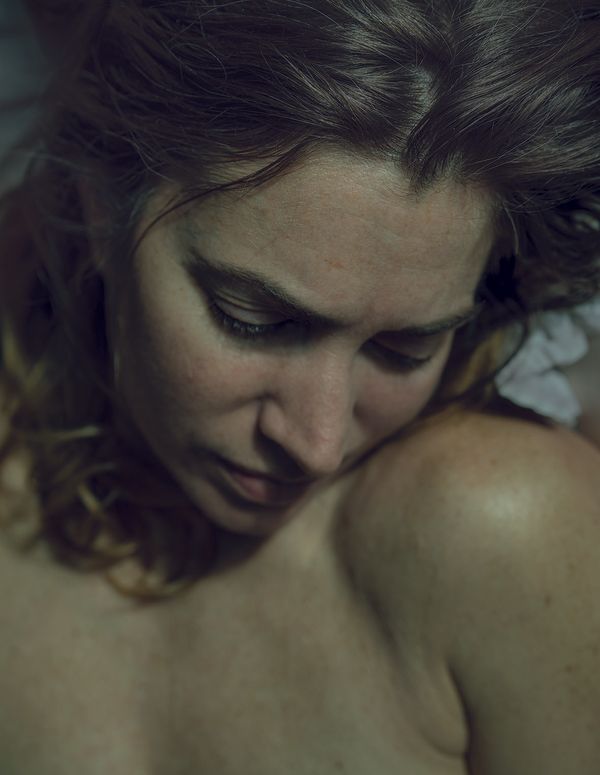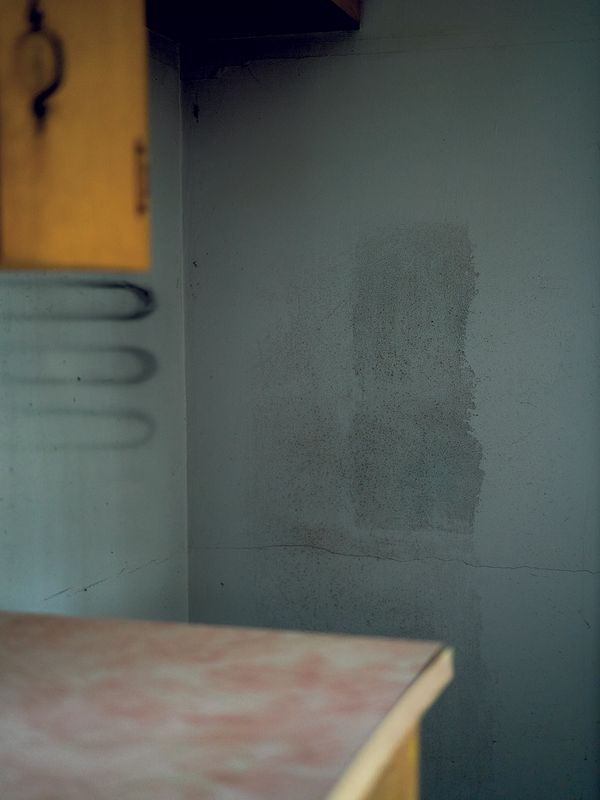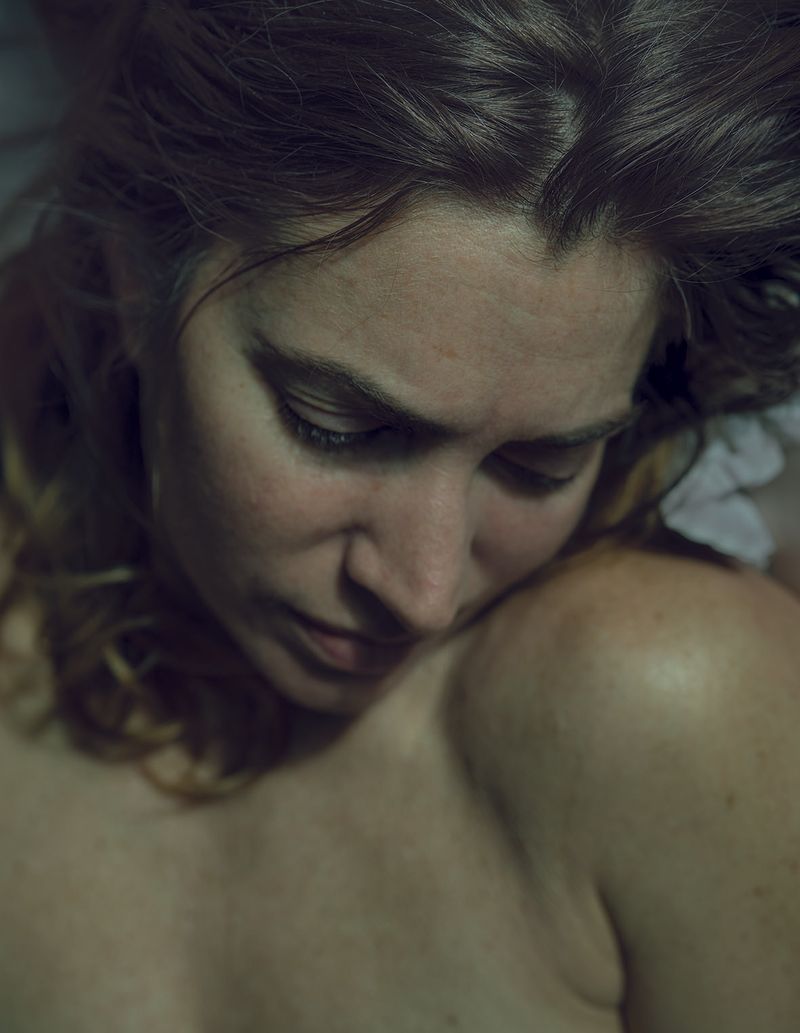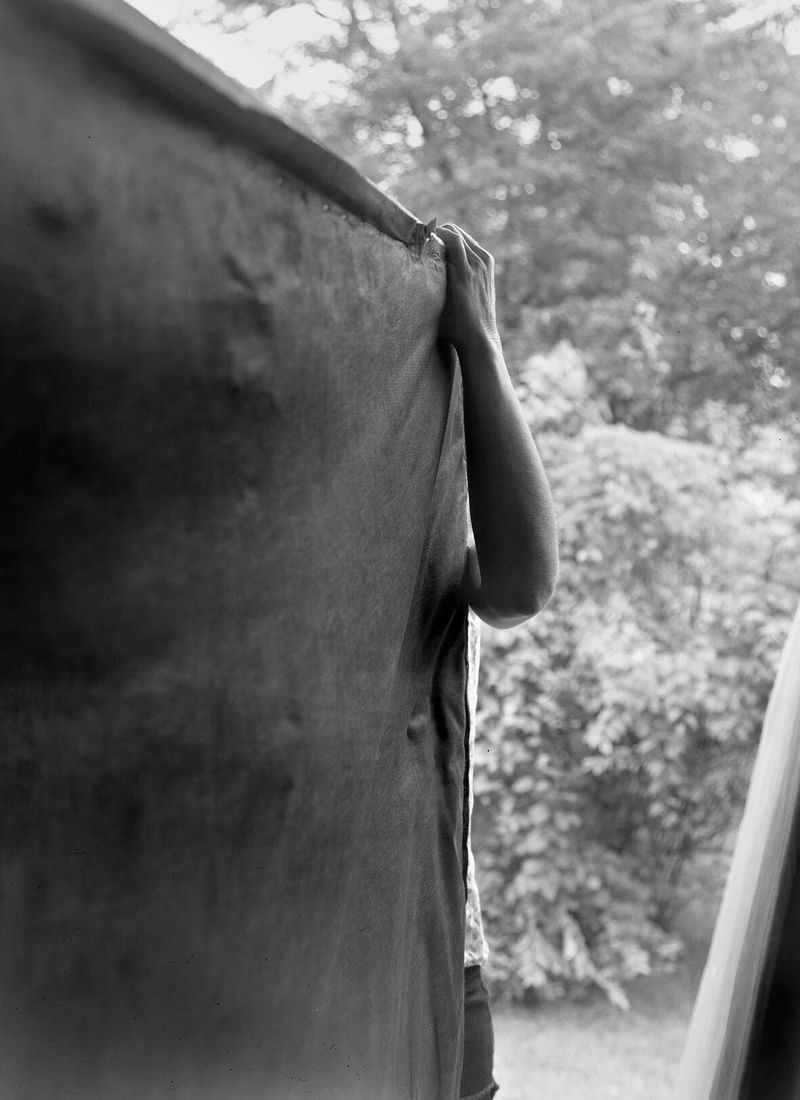The Dark Interiors of the American Home
-
Published18 Nov 2020
-
Author
Through the gestures of his partner, Adrianna, and the gestures of his camera, Raymond Meeks’ poetic images gently enquire what it is that makes a relationship, that transforms a house into a home.
Through the gestures of his partner, Adrianna, and the gestures of his camera, Raymond Meeks’ poetic images gently enquire what it is that makes a relationship, that transforms a house into a home.
Ciprian Honey Cathedral starts with the cover. There’s no picture, only text in the form of a poem. It’s a poem of smells, of markings, of things that are tumble-down, cold, and off-key. There is burnt barbecue sauce and a sense of dissonance until the words emerge from the shadows and we get full-tilt-boogie sugarboo emerging from the ferns and the flowers and the treetops of the poem.
It’s a poem of bruising and healing, of memories immersed in chaos, of a woman and child, and the life of a house in the woods, in nature. And that is what the book is about, a woman in a house that is infused with memories of the past, that is about to be infused with memories of the future.
The woman is Adrianna, the house is where she and Meeks have just moved into. We see Adrianna wandering through a house that is slowly becoming her own, we see her testing out the lights, marking out the space, finding corners to sit, extending from the inside to the outside.
How she lives in this house, how she inhabits it with both her conscious self and the sleeping, dreaming self that repeatedly appears throughout the book, is the quiet consideration of Ciprian Honey Cathedral. What does it mean to move into a house where the domestic rituals of the previous inhabitants still linger? How do you make your own shadow, how do you become part of this house and transform it into your home?
There is a touch of the scent-marking about Ciprian Honey Cathedral, and this is reinforced by Meeks’ images of his own home. He photographs the markings of past inhabitants, the joins of the skirting boards, an upswell of mold on a living room wall, old radiators, old lamps, old mattresses that reveal the way the house has spilled out of itself into a ramshackle yard, into the debris of loose wires and unswept leaves.
He photographs what the house used to be and the processes by which the lived-in-ness of the house becomes part of new lives and new memories. The house is cleansed of the debris of the previous inhabitant, and new debris is brought in. The rooms, the yard, the garden, the street, are all marked by Adrianna and Meeks. Where Adrianna sleeps, the way her hand angles down from her wrist, the parting of her lips as she sleeps, how her arm folds over her face as she sleeps, all become fused with a new presence that connects the physical, emotional, and domestic spaces of this new home.
One image of Adrianna in the basement shows her switching on the light, her eyes downcast in an expression that can be read in multiple ways. Her hair is tied back, her arms covered by a Prussian teal dress that seems as old as the black boiler standing in the background. The image is tentative, casting a dim light on a scene that cuts across different eras and asks the fundamental questions of what it means to inhabit a place, to make it a home, to enfold it with presence and life and love. The image is also part of an underlying darkness in the book. Meeks inhabits this house with a presence, with a weight that may be of homes from the past, homes described by writers like Richard Yates and John Cheever that have a leaden presence that weighs across time, that links histories, that cuts into the present. So there is a darkness there, something written beneath the peeling paint and rotting plasterwork.
But there is also light; in the exterior images, in the luxuriousness of entropy and decay, and in the idea of shelter. At times, life is perhaps meant to be dark. At times, perhaps not. The book ends with a dedication; ‘to Adrianna’, it reads, ‘we have not arrived to explain, but to sing. both hands, full-tilt boogie-woogie.’
---------------
Ciprian Honey Cathedral by Raymond Meeks
Published by MACK in 2020
Hardcover with printed PVC jacket // 96 pages // 30 x 24 cm // £45
---------------
Raymond Meeks lives and works in New York’s Hudson Valley. His work is represented in the collections of the National Gallery of Art, Washington D.C., Bibliotheque Nationale, France, and the George Eastman House, with recent solo exhibitions at Casemore Kirkeby in San Francisco and Wouter van Leeuwen in Amsterdam. His 2018 book Halfstory Halflife was a finalist for the Paris Photo/Aperture Photobook of the Year Award. Meeks is a 2020 recipient of a Guggenheim Foundation Fellowship in Photography. Follow him on Instagram.
Colin Pantall is a photographer, writer and lecturer based in Bath, England. His latest book, All Quiet on the Home Front, focuses on family, fatherhood and the landscape. Follow him on Twitter and Instagram.







